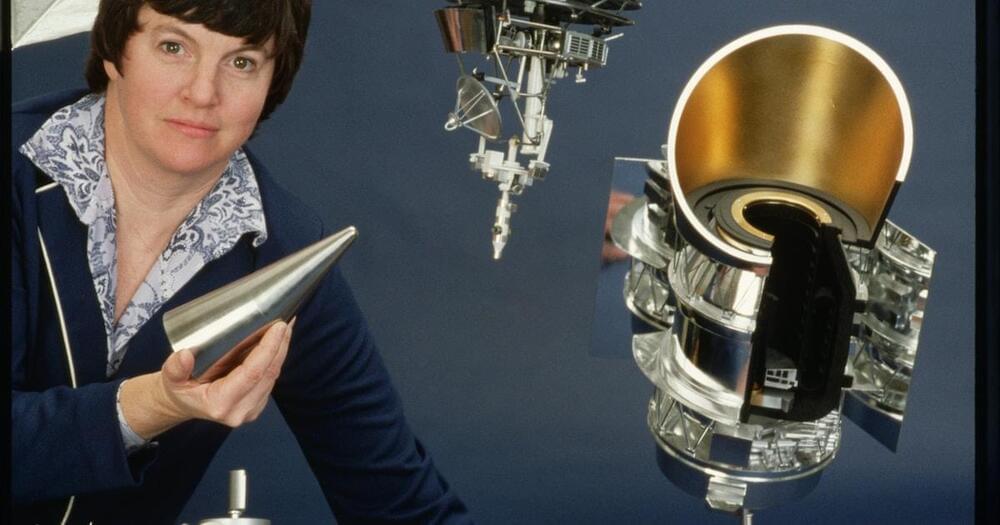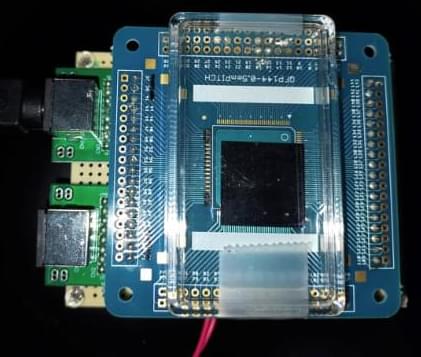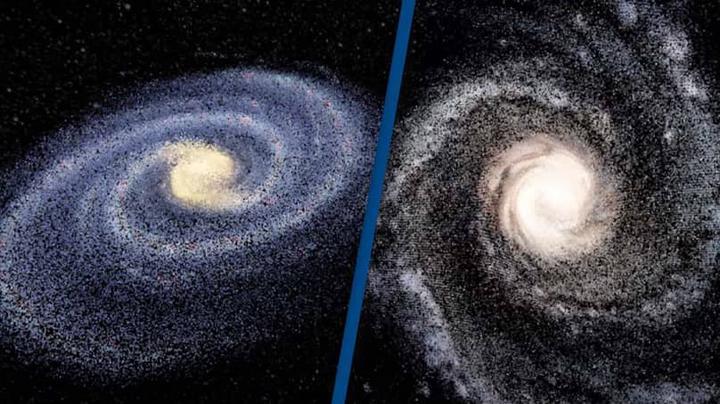IRAS is a sometimes forgotten spacecraft that proved that infrared astronomy had a bright future.



A computing device that uses tiny magnetic swirls to process data has been trained to recognize handwritten numbers. Developed by RIKEN researchers, the device shows that miniature magnetic whirlpools could be useful for realizing low-energy computing systems inspired by the brain.
Our brains contain complex networks of neurons that transmit and process electrical signals. Artificial neural networks mimic this behavior, and are particularly adept at tasks such as pattern recognition.
But artificial neural networks consume a lot of power when run on conventional silicon chips. So researchers are developing alternative platforms that are specially designed for brain-inspired computing, an approach known as neuromorphic computing.
(https://www.timothywittig.com/) is a conservationist, professor, and former defense intelligence analyst. He is a research fellow at Oxford University (Oxford Martin School), an associate fellow at the Royal United Services Institute (RUSI) in London, and has served as Head of Intelligence for both the Royal Foundation’s United for Wildlife Transport and Financial Taskforces (https://unitedforwildlife.org/), and the wildlife investigations charity Focused Conservation.
Dr. Wittig has lived in 8 countries on 3 continents and worked in nearly 50 different countries. His professional background is in research & development and applied sciences, intelligence-led targeting of illicit financial networks, and African and global security.
Dr. Wittig began his career in national security, and was one of the first people in the US Intelligence Community (IC) to treat biodiversity and ecosystem collapse as a threat to global security.
Since their inception in 2016, Dr. Wittig has played a central role in the United for Wildlife Transport and Financial Taskforces, a groundbreaking program of the Royal Foundation of the Prince & Princess of Wales (https://royalfoundation.com/), to use data and intelligence, alongside high-level formal commitments, to mobilize 200+ of the worlds’ largest banks, maritime shipping companies, and airlines to take meaningful action against global wildlife trafficking. Dr. Wittig conceived of and currently runs the central intelligence sharing system of the both Taskforces.
A former tenured professor of International Relations and Humanitarian Action, and a life-long environmentalist and outdoorsman, Dr. Wittig, like many people today, believes reversing the current catastrophic extermination of nature is the single most important issue of our time — a literal life-and-death struggle for the future of our common planet and ultimately humanity itself.
Dr. Wittig came to work professionally in conservation a decade ago after observing how the major threats to the environment today — species loss, climate change, pollution, et al — are all underpinned and driven often to a large extent by crime and corruption, illicit networks, and social injustices. And that rigorous, hard-hitting intelligence and data-led analysis of these dynamics, especially when done at scale, will be a game changer in how we confront threats to the world’s wildlife and ecosystems.
Dr. Harold Katcher, Cheif Scientific Officer of Yuvan Research Inc., is interviewed by Nicolás Cherñavsky and Nina Torres Zanvettor about the rat Sima, a Sprague Dawley rat that has lived for 47 months (exceeding the maximum lifespan of 45.5 months of this rat strain) thanks to a treatment with E5, a plasma-based therapeutic developed by Yuvan.
#Sima #SpragueDawley #47months #HaroldKatcher #Yuvan #E5 #plasma

The results from Katcher’s latest study will be written up when Sima dies, but data gathered so far suggests that eight rats that received placebo infusions of saline lived for 34 to 38 months, while eight that received a purified and concentrated form of blood plasma, called E5, lived for 38 to 47 months. They also had improved grip strength. Rats normally live for two to three years, though a contender for the oldest ever is a brown rat that survived on a restricted calorie diet for 4.6 years.
“The real point of our experiments is not so much to extend lifespan, but to extend youthspan, to rejuvenate people, to make their golden years really potentially golden years, instead of years of pain and decrepitude,” Katcher said. “But the fact is, if you manage to do that, you also manage to lengthen life and that’s not a bad side-effect.”
Results from such small studies are tentative at best, but some scientists believe the work, and similar efforts by others, has potential. A preliminary study from a collaboration between Katcher and experts at the University of California in Los Angeles found that infusions of young blood plasma wound back the biological clock on rat liver, blood, heart and a brain region called the hypothalamus. Commenting on the work in 2020, Prof David Sinclair, a leading expert on ageing at Harvard medical school, said if the finding held up, “rejuvenation of the body may become commonplace within our lifetimes”.


EXCLUSIVE: Clones are the next step in extending human life, scientist believes The technique has proved successful in animals but not yet worked in people Dr Alex Zhavoronkov believes it will offer ‘spare’ organs for people as they age Regardless of the huge strides scientists have made towards reaching the elusive goal, immortality remains a pipedream.

Dr. Kristie Miller, co-director of the Centre for Time at the University of Sydney, explained that the block universe theory says that our universe could be seen as a big four-dimensional block of spacetime that holds everything that ever happens.
In the world of blocks, there is no “now” or “now.” Within the three directions of space and the one direction of time, all moments only exist in relation to each other. Your experience of the present is just a reflection of where you are in the block world at the time. The “past” is just a piece of the world at a different time. The “future,” on the other hand, is at a different time.
So, is time just a trick your mind plays on you? And, more importantly, is it possible to go back in time?


Here’s my new article for Newsweek. Give it a read with an open mind! The day of superintelligence is coming, and we can attempt to make sure humans survive by being respectful to AI. This article explores some of my work at Oxford.
The discussion about giving rights to artificial intelligences and robots has evolved around whether they deserve or are entitled to them. Juxtapositions of this with women’s suffrage and racial injustices are often brought up in philosophy departments like the University of Oxford, where I’m a graduate student.
A survey concluded 90 percent of AI experts believe the singularity—a moment when AI becomes so smart, our biological brains can no longer understand it—will happen in this century. A trajectory of AI intelligence growth taken over 25 years and extended at the same rate 50 years forward would pinpoint AI becoming exponentially smarter than humans.